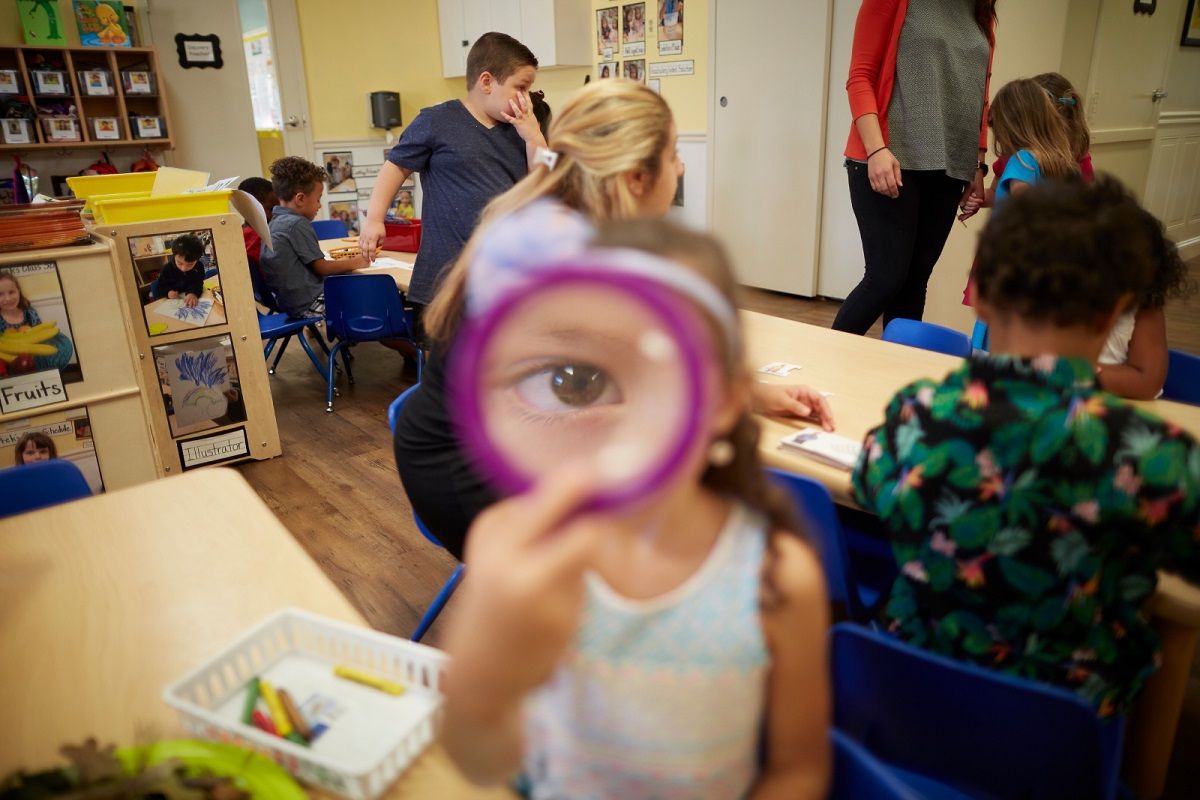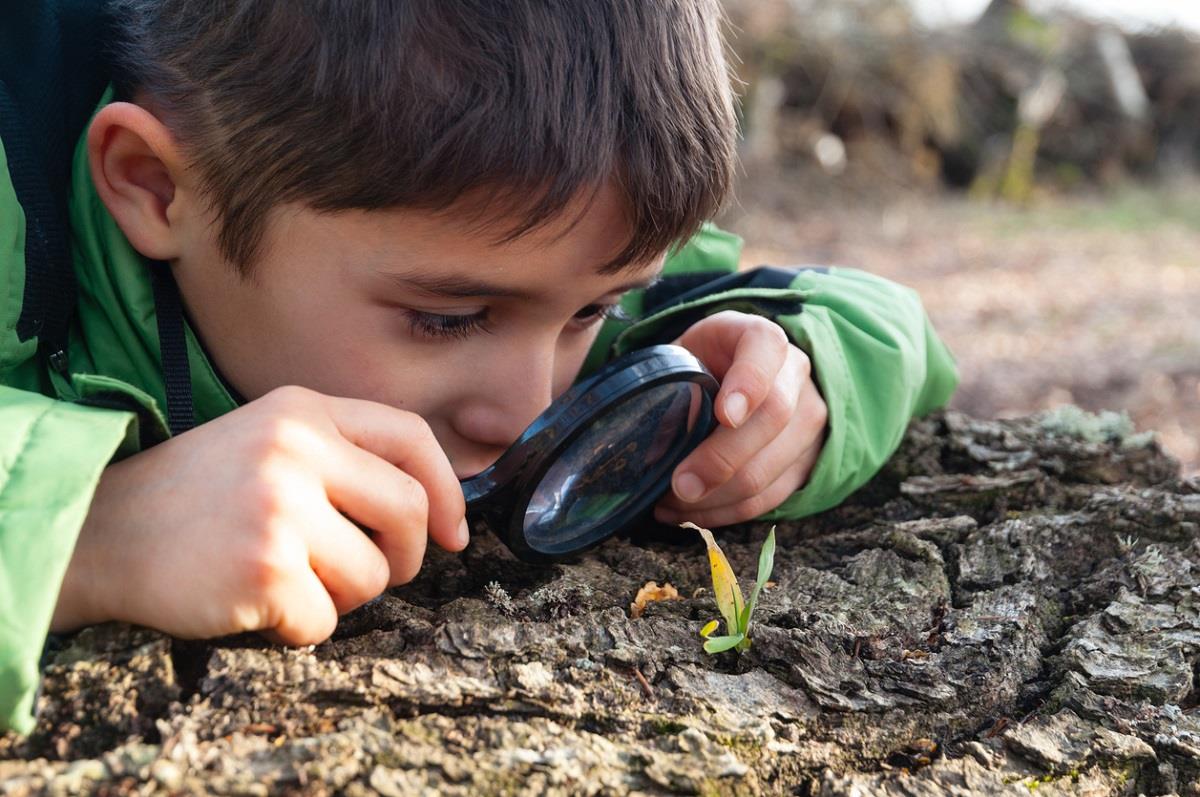Observe and Learn! How a Magnifying Glass Builds Kids' Science Skills

By Rachel Ward
Young children’s brains are hardwired for exploration and observation—two things that just so happen to be early science skills. By around age four or five, however, their scientific abilities really start to take off because they’re old enough to start using cool scientific tools.
Enter the magnifying glass.
“At this age, children’s critical-thinking skills and fine-motor skills have developed to the point where they can start using simple tools,” says Meg Davis from KinderCare’s Education team. Magnifying glasses help kids see things they’ve never seen before, like small insects close-up. It opens up a whole new world to them, which they find pretty amazing!
Everyone Belongs In Our Circle
At KinderCare, we’re committed to building warm, welcoming and supportive classrooms for children of all abilities, backgrounds and experiences.
Find a center near youThat’s why this week in our centers, we’re taking kids out into the fresh spring air to take a closer look at the natural world popping up around them—and when we say a closer look, we mean really close.
Using Science Tools Gets Kids on the Path to Science Success
With magnifying glasses and journals, children work together to examine whatever they find—from leaves and soil to pebbles and ants. They then write about or draw pictures of what they see—which gives these young scientists a literacy-skills boost.
It seems pretty simple, but this activity can be a real eye-opener for prekindergarteners. “Using magnifying glasses to look at the veins on a leaf or an ant’s three body parts gives children new things to think about and wonder about,” explains Davis.

There’s a reason we give kids journals to write things down—beyond building literacy skills. Getting children used to recording their findings sets them up for success in their science studies later in life (and gives them a head start on learning the scientific method, whether they realize it or not).
If you don’t have a magnifying glass in your home, you can find one pretty cheap and explore what other things look like up close. Make things even more scientific by handing over some crayons and paper so your child can write down what they discover. (Feel free to give them a little white smock to really set the scene.)
Build Science Skills with a Magnifying Glass: What Do Things Look like up Close?
1. Observe the Crystals in a Cube of Ice
Water and its various forms are intriguing to kids—so encourage your child to take a closer look at ice for a real “wow” experience. You both might be dazzled by the ice-crystal patterns and the shades of white and blue. Turns out a cube is pretty complex! Extend the learning even further by talking about the ways water can turn from liquid to ice and back again!
2. Take a Peek at Your Hairbrush
Are you helping your child brush their hair before bed? Sneak in some science before story time by looking at several strands of their hair and your hair up close. At normal eye level, hair looks smooth and fine—but what about up close? What does your child see? How is their hair different from your hair?
3. Check out the Fibers in a Strand of Yarn
Next time you’re snuggling with your kids under your favorite warm blanket, grab the magnifying glass to examine the fibers keeping the blanket together. Is there a pattern to the fibers? Once they’ve had an eyeful, encourage them to take a look at other fabrics around the room to compare—like maybe their T-shirt, socks, or even the couch itself!
A Lifetime Of Confidence Starts Here
Our teachers help every child build the confidence they need to try new things and explore the world around them.
Search for a center near you4. Peer into Your Dinner Plate
Is your child shaking some salt onto her green beans? Before they dig in, encourage them to take a peek at a couple of those salt crystals. What do the granules look like up close? For that matter, what do the beans look like up close? (If they really can’t wait, though, let them eat—science can be put on hold for a growling tummy.)





